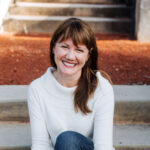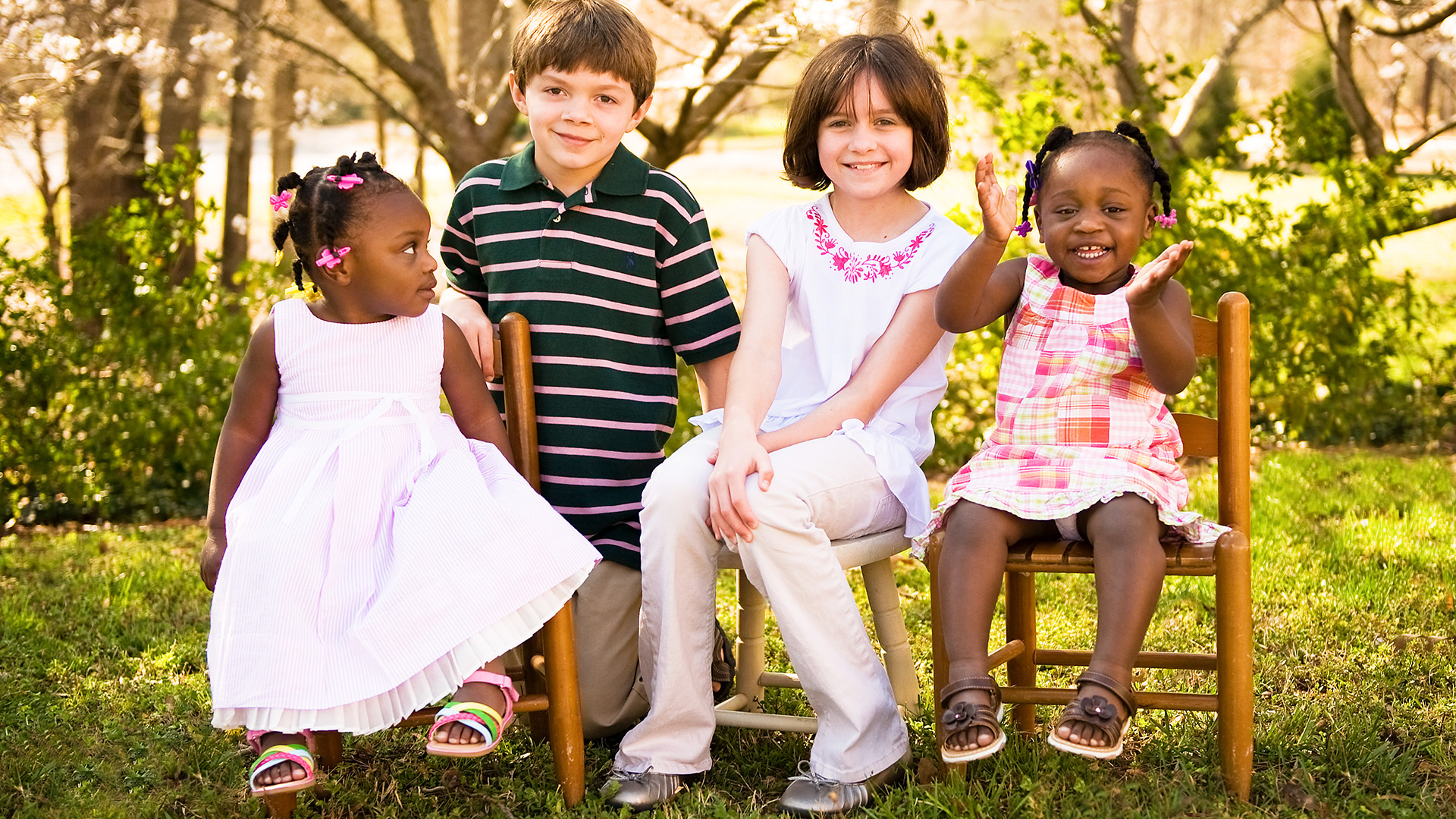
Skin in the Game
When a Georgia minister and her husband adopted African American twins, they embarked on a challenging journey of love, learning, and confronting uncomfortable truths about race in the South.
In the county where we lived for twenty years, there are acres and acres of cotton fields. In the fall, I regularly saw families standing in the cotton fields taking pictures to be used for Christmas cards or graduation announcements. Often, the families were all dressed in white, and the sun was setting.
I get it. Cotton is a beautiful crop in the fall. The white bolls above the dark stems make for a beautiful backdrop.
Nonetheless, every time I saw a cotton field photo session, I’d think, “Nope, our family is definitely not doing that.”
The problem wasn’t the cotton. The problem was the American South’s long and complicated history regarding cotton. It’s hard for me to look at a stand of cotton and not remember the generations of enslaved people forced to work in those fields.

My husband, Bryan, and I went from having two kids to having four kids in less than a week. I had always felt a tug toward adoption. I didn’t struggle with fertility or difficult pregnancies; in fact, I had my two beautiful babies just fifteen months apart. We were swamped for a few years with our daughter Caroline and son Caleb, but it was a happy chaos.
Once they were in school, I just couldn’t drop the idea of adopting. So I opened up my heart and dove in head-first. When we started looking into the adoption process in February 2008, I could never have predicted we’d have precious twin girls in our house within a few months.
On the April morning when we met with our adoption attorney, we had already completed loads of paperwork and our home study. Just that morning, twin girls were placed by their birth mother with our attorney. Her only request was that the attorney find someone who would raise her girls in the church. She said nothing about our race, their education, or even seeing them grow up; she only wanted a family who would raise them in the church. The attorney told her, “I’m meeting with a minister and her husband later today, and they are open on race and about taking a sibling group.”
I didn’t yet know that progressive isn’t the same as anti-racist. I did not know how many challenges we’d face. I did not know, frankly, just how white we were.
Three days later, we drove to the hospital and picked up our African American twin daughters.
I’m still sometimes stunned by how quickly we became this family of six, the family I truly believe we were meant to be. Our life together over the intervening years hasn’t been a Benetton ad, but I am so thankful for their birth mother and for everyone who helped us along the way.
I thought we were ready to be a multiracial family: after all, we were progressive. But I didn’t yet know that progressive isn’t the same as anti-racist. I did not know how many challenges we’d face. I did not know, frankly, just how white we were.
But as I saw those families taking photographs in the autumn cotton fields, I did know this: to take photographs of my Black kids, Elizabeth and KD, in those fields would be ignorant at best and cruel at worst.
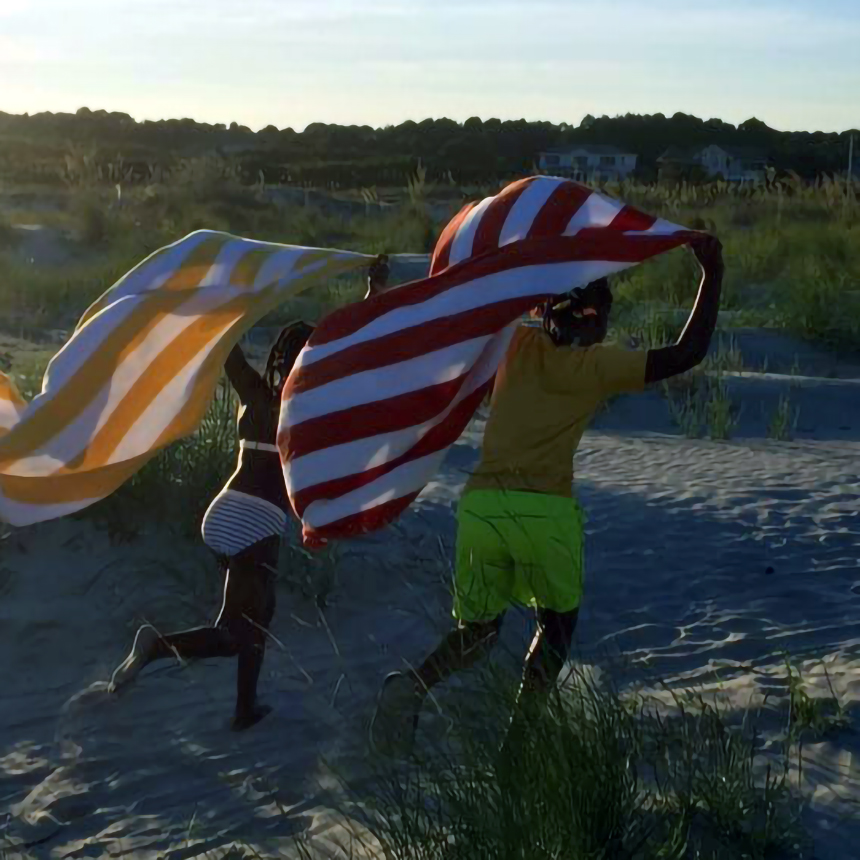
With Elizabeth and KD in our family, I see the world differently. I attended a funeral recently and noticed the only people of color in the room were the Navy officers who were performing the military rites. I wondered how often those officers found themselves in such situations. Later that same day, when I drove past “Plantation Drive,” I hoped the officers didn’t have to pass that same street sign on their way out of town.
I now notice who speaks at worship services; I notice who has access to the microphone at events. I notice when Black people don’t make eye contact with me when I’m out with the twins. I notice how race dominates our societal structures and schools and churches.
People who don’t live in the American South can’t imagine how often we step around artifacts of slavery in our daily lives. People get married at “plantation” venues; college students pass Civil War monuments on their way to class; Confederate flags are still displayed on license plates and outside restaurants.
And it isn’t just Civil War history that haunts us. Historically and culturally, the Civil Rights Movement is still fresh. In our local public schools, the Civil Rights Movement is taught before slavery. Maybe this is developmentally appropriate, maybe it’s because Martin Luther King Jr. Day is celebrated even in kindergarten, maybe because it’s easier to start with a “win.” But it’s a little confusing for children because they can tell a piece is missing. Why did Black people not have those rights from the beginning? What did they need to be freed from in the first place?
In fourth grade, the kids learned that slavery happened a long time ago and that it has nothing to do with us now. That, of course, is not true—and certainly not for my family.
Since our biological kids went through our local public elementary school first, I already knew what would be taught and when. In kindergarten, MLK Day became part of teaching the major holidays and “good citizenship.’ The story of Ruby Bridges, the first Black child to integrate an all-white public school in the South, came in first grade. The Civil War isn’t handled until later, in fourth grade. I was relieved to learn that the cause of the Civil War is no longer taught as “states’ rights,” but was chagrined to learn teachers did not draw the connections between slavery and modern-day racism. Kids learned that slavery happened a long time ago and that it has nothing to do with us now.
That, of course, is not true—and certainly not for my family, so I knew in my gut that we needed to tell the twins about slavery before they heard about it at school, especially because they were often the only Black kids in their classes.
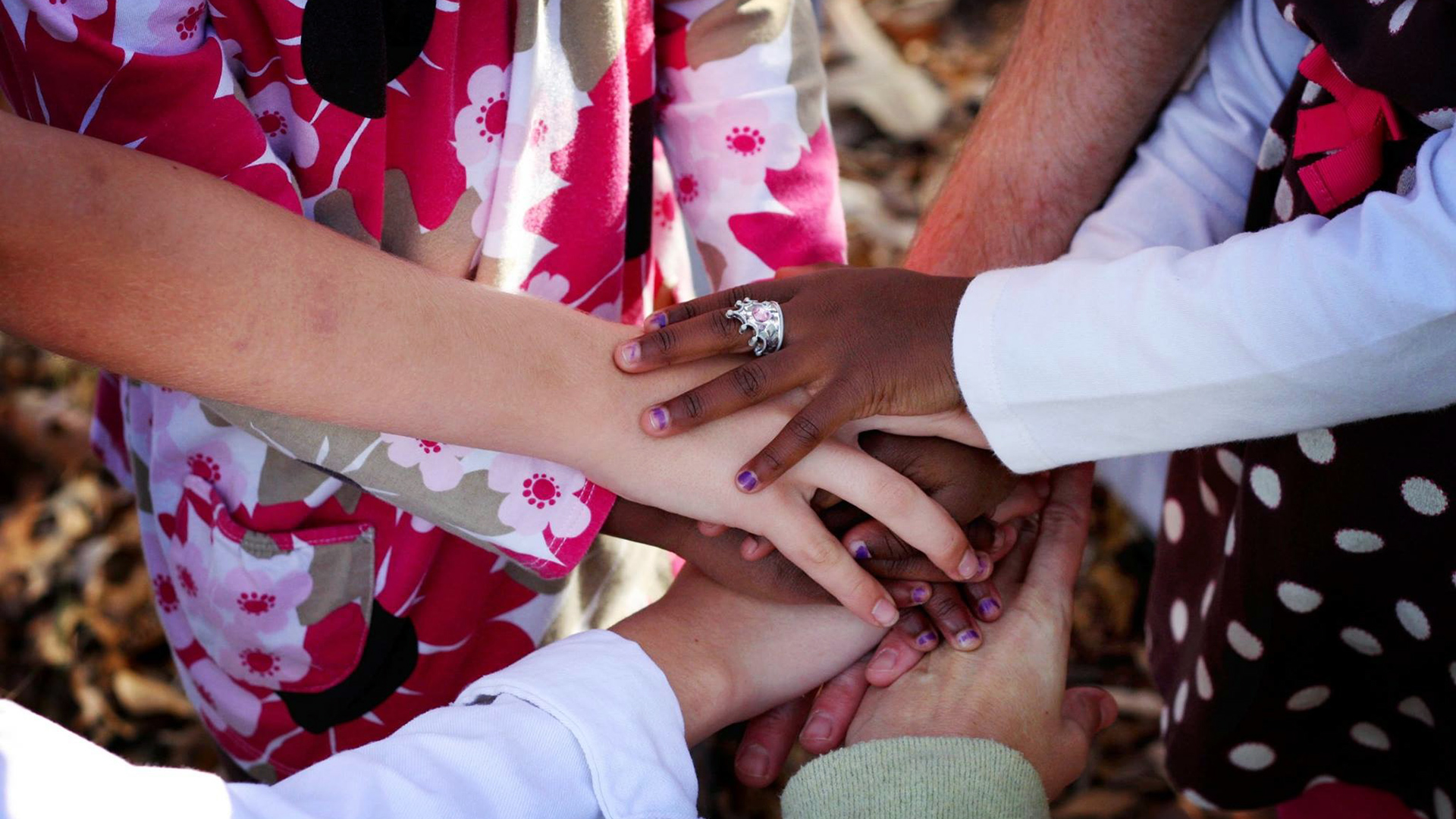
A colleague once told me a Rabbi friend explained to him how Jewish families tell their children about the Holocaust carefully and intentionally. When white families plan to have “the talk” with their kids, it’s about sex; for Jewish families, it’s about the Holocaust. Sometimes, Passover is a chance to introduce the history of Judaism. Sometimes, it’s handled by elders in the family who were themselves survivors of persecution. Often, current events trigger questions and families have picture books ready that emphasize the importance of honoring differences. In general, many Jewish parents don’t think kids under age ten can handle this brutal information; they want to keep them protected, so they must be strategic about school programs and other Holocaust remembrances.
Before we talked to our twins about slavery, I asked several Jewish people how they learned about the Holocaust. (I’m a lot of fun at parties.) I also asked several Black friends how they learned about slavery. They told me they learned from elders in their family or from being called an ugly name, or, most remarkably to me, from attending a family reunion and trying to figure out why white people were there, too.
These are messy but necessary conversations. Over the course of a few years, my husband and I talked to the twins about slavery; then, we talked about the Civil Rights Movement. I thought we’d done a decent job of prepping them so they wouldn’t learn any of these historical truths alone, without warning, in school. But of course, no parent can anticipate all the ways the world can break your child’s heart.
I thought I was educated about the movement, but I’d never heard of the Birmingham Children’s Crusade. So KD had to learn about it, alone, in fourth grade. And then she started having nightmares.
I thought I was educated about the movement, but I’d never heard of the Birmingham Children’s Crusade. I didn’t know that in the spring of 1963, Black children peacefully marched from the Sixteenth Street Baptist Church to talk to the mayor about segregation, only to have police dogs and high-pressure fire hoses turned on them. I didn’t know hundreds of children were arrested, put on school buses, and taken to jail.
I’ve lived in the South my whole life and had never studied this event, so KD had to learn about it, alone, at her new private school in fourth grade. And then she started having nightmares.
Of course she did. The kids in those pictures looked like her.
Several years earlier, I had to leave the room when KD’s sweet little six-year-old voice said, “I can sit anywhere I want to on the bus now because of Rosa Parks.” She sounded so hopeful. She didn’t yet know that Rosa Parks wasn’t the end of the story—but I did. I didn’t want her to see my tears. I was torn—trying to reassure KD while acknowledging the historical truths she was processing.
These weren’t just history lessons for our family anymore. This was personal.
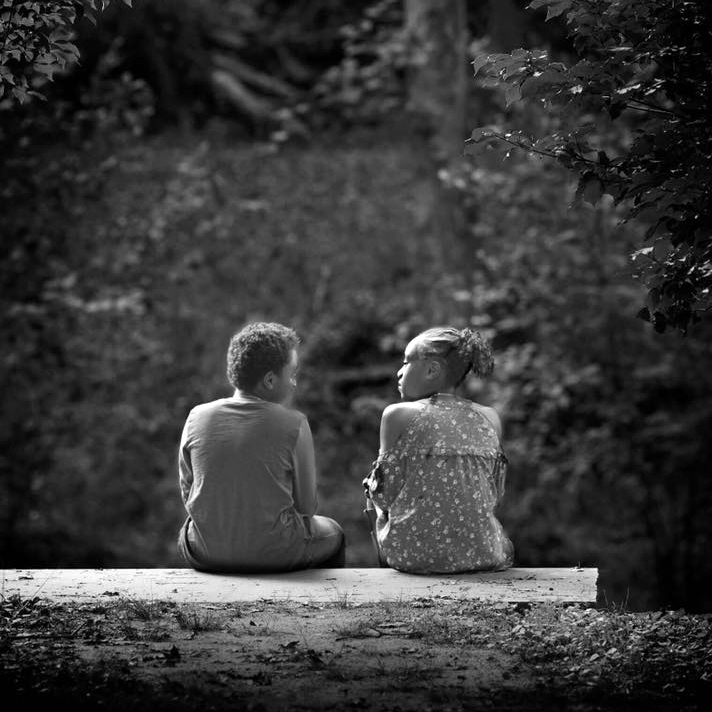
It’s always been personal for people of color. Before the twins, I had the privilege of distance. But I should have known it was my struggle, too, all along.
Here’s what I say to white people considering adopting, especially trans-racially, after these very violent past few years: “Only adopt if your heart can handle children and young adults who look like your children being shot and those videos playing on the news. You will be overwhelmed by these images. You will be changed by them. You will take every one of these incidents personally.”
My twins will be driving soon. Within a year, I won’t be in the car with them anymore. I won’t be there to make sure they keep their hands at all times where the police can see them. I won’t be there to explain that KD has short hair and wears boys’ athletic clothing, but that she’s actually a young woman and therefore, maybe less threatening at a traffic stop. I won’t be there if someone decides they look suspicious as they drive up to our house. Having white parents won’t mean anything when they are on their own.
What I do have is blind hope and a dogged determination to ask for help in all situations. My husband and I love these girls to the moon and back; we can read and study and listen until the end of time, but we will never know what it’s like to walk around the world as Black women. But you know who does? Black women.
The first time we visited a historically African-American church in a nearby town, our family stood out. It was a small church, and we were the only white people there that day. The woman welcoming everyone that morning said she was glad to see the members and their families. Then she said that it seemed like there might be some brand new visitors that morning. She asked the visitors to stand up and introduce themselves. “Is she talking about us?” my son Caleb whispered to me. Yes, she clearly was.
I stood up and said, “My name is Anna McArthur and we’re visiting from Athens. I have with me today two of my four children: my son Caleb and my daughter Elizabeth. We’re honored to be here with you.” I sat down and the woman said, “Thank you. We welcome Elizabeth and her family today.”
As we were about to leave, an older woman, a Deaconess with a flowery hat, slowly made her way over to our car. Leaning through the front window, she said, “Thank you for raising our girls.”
My first thought was, “Oh, she misheard me and thought that my name was Elizabeth. She meant Anna’s family.” Elizabeth is, after all, a child. The only place I’m addressed by my child’s name is at school or some other “child-centered” space. I couldn’t quite figure out what had just happened. I couldn’t figure out why I felt uncomfortable. It took a few moments for me to realize this church was Elizabeth’s space. This woman knew why we were there in that Black church: we were there for Elizabeth. It was like I was a blurry person in the background, and the woman who welcomed visitors saw Elizabeth in crystal clear definition. This was a new feeling for me.
Later, I called my brother Clay and told him about being welcomed as “Elizabeth’s family.” He loved the story.
“Did you want them to thank you for being Elizabeth’s driver?” he asked. “How does it feel to not be the center of attention?”
I admitted I didn’t realize how much white privilege (and maybe even some “mom privilege”) I’d been carrying around with me. It was humbling for me. But it was fantastic for Elizabeth. After we were introduced as “Elizabeth’s family,” I looked over at Elizabeth and she was sitting up straighter and taller. She grew inches after hearing her name; she was beaming. Elizabeth is one of four children and she’s a twin, so it’s rare that she is ever introduced alone. She felt honored and embraced.
A few months later, all six of us visited that same church. It was a longer worship service than we were used to, and everyone was hungry and grumpy as we were trying to load all four kids back into our minivan. My own mind raced with questions: was it even appropriate for us to be there, were we invading one of the few sacred spaces Black people have in America? As we were about to leave, an older woman, a Deaconess with a flowery hat, slowly made her way over to our car. Leaning through the front window, she said, “Thank you for raising our girls.”
I was speechless. After a long silence, on the ride home, I asked my husband, “Did she say ‘our’ girls, or did I mishear her?” She definitely said “our.” There are a thousand reasons she could have not wished us well, and yet, she claimed our girls. She extended generosity and grace to this white family she’d never met. More importantly, she claimed and blessed the twins.
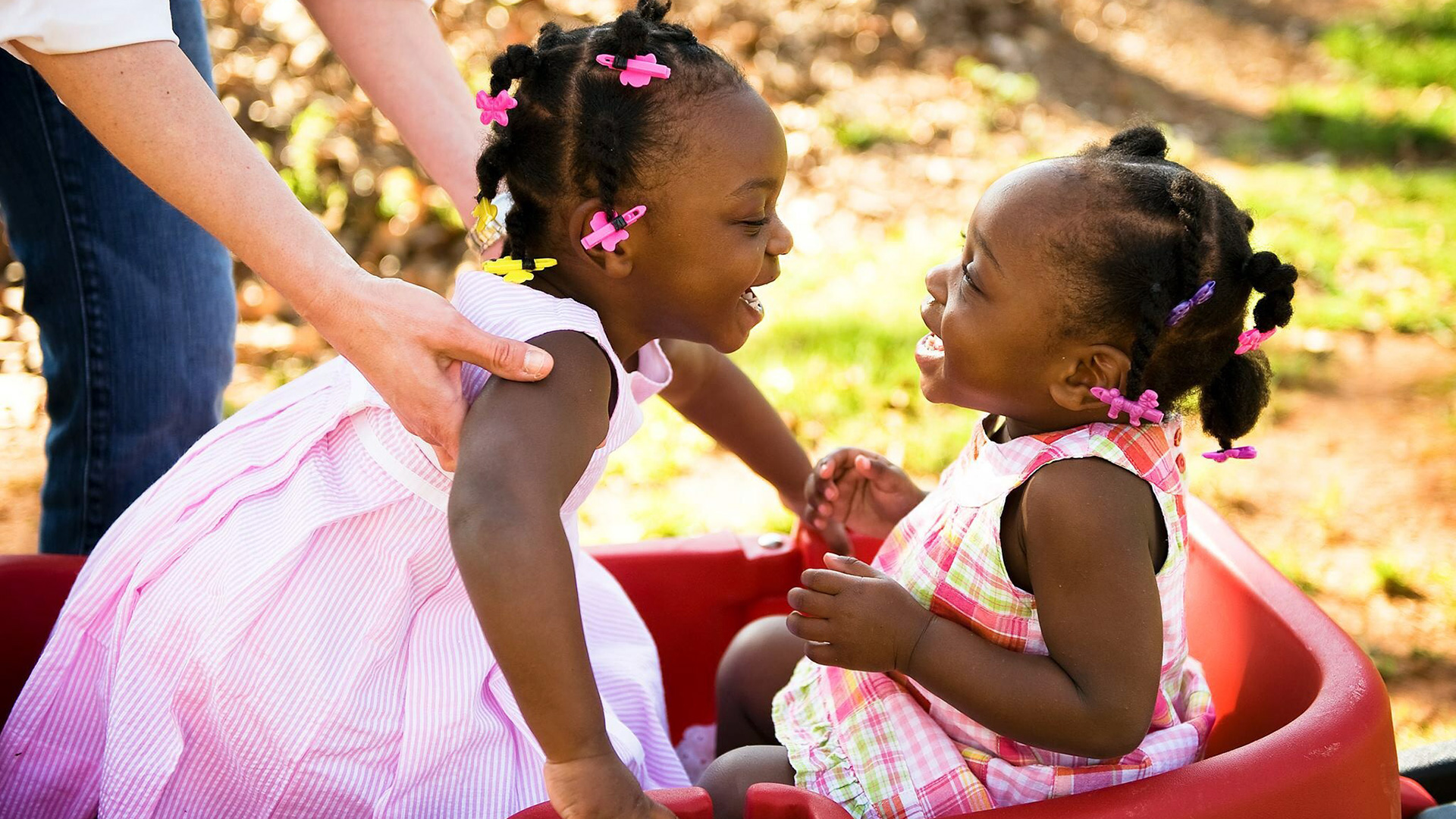
A Methodist pastor from New Orleans once told me a story about his neighborhood during Hurricane Katrina. It’s a well-documented incident, actually.
In the wake of the storm, people were stranded in a mixed-income, mixed-race condominium complex called the American Can Company in Mid-City. There were 170 residents left in the building, plus seventy-five people from the neighborhood who had come seeking shelter and gotten stuck after the city flooded. Many of the residents were elderly or handicapped. An Marine veteran named John Keller used fire extinguisher powder to paint on the roof that they needed food and water. There were Black people on the roof waving at the helicopters, hoping to be rescued. For days, helicopters hovered nearby but never landed. Then, Keller, himself a Black man, had the idea to take all the Black people off the roof and to put white people on the roof. This included white people in wheelchairs that they carried up to the roof.
White people on the roof changed everything.
Within fifteen minutes, a helicopter had landed and the pilot was asking what the residents needed. Soon, food and water were falling from the sky. Perhaps the helicopter pilot who stopped to rescue the white people didn’t even realize his or her bias, but it was there. It’s everywhere.
My pastor friend’s story vividly illustrates our racial prejudices as a society. His story is about white people being given the benefit of the doubt. It’s about people with white skin being seen as more valuable or more deserving than people with brown skin.
As a mom of Black children, I hoped I’d misunderstood the story. As a white person, though, I kind of knew in my bones it was true.
I can’t change the racial dynamics in my town or state or country. But what I can do is get up on the roof and wave my arms around like my life depends on it. Because my twins’ life kind of does depend on it; and as their mom, so does mine.
I knew they were tired of being the only Black kids in their classes or on their sports teams; I wanted them to have Black teachers and coaches and mentors. I knew it was time for us, as white parents, to be the ones who stood out, instead of the twins.
I can make changes that are within my purview. During the pandemic, we decided to move from the neighboring county into downtown Athens, Georgia. Our big kids had moved away for college and our house suddenly seemed big and empty without them. I was also looking ahead and realizing that I wanted the twins to be at a high school that was diverse. I knew they were tired of being the only Black kids in their classes or on their sports teams; I wanted them to have Black teachers and coaches and mentors. I knew it was time for us, as white parents, to be the ones who stood out, instead of the twins.
I love living in town, where so many of our neighbors fly Pride flags and have “Black Lives Matter” signs in their yards. I didn’t anticipate, though, how our kids would see the economic disparities in our new neighborhood. Shortly after we moved, Elizabeth said, “I’m glad there are more people in our neighborhood now that look like me, but I think most of them are homeless.” It was a real gut punch. We live near a homeless shelter and public housing, but also on a street with lovely homes. It’s the kind of in-town neighborhood that is common in smaller Southern cities. It’s blended racially, but not economically. It’s diverse, but still divided.
Living in town is definitely better for our family than living near those cotton fields, but raising these beautiful Black girls of ours is still complicated. It’s messy and beautiful and impossible and grace-filled.
Kind of like the South.
About the author
Anna McArthur is a mom to four kids, including two recent college graduates and adopted African American twin girls who are high schoolers. She is a blogger, newspaper guest columnist, and contributor to parenting magazines and websites, including Her View from Homeand the Motherly Collective. Anna’s essays have recently been published by Grown and Flown and Business Insider. A graduate of Clemson University and the Columbia Theological Seminary, Anna lives in Athens, Georgia, with her husband, Bryan, and their teenaged girls, who are much cooler than her. Anna’s first book, Hope for Moms: It’s Tough Out There, but So Are You, will be published in May 2025.

